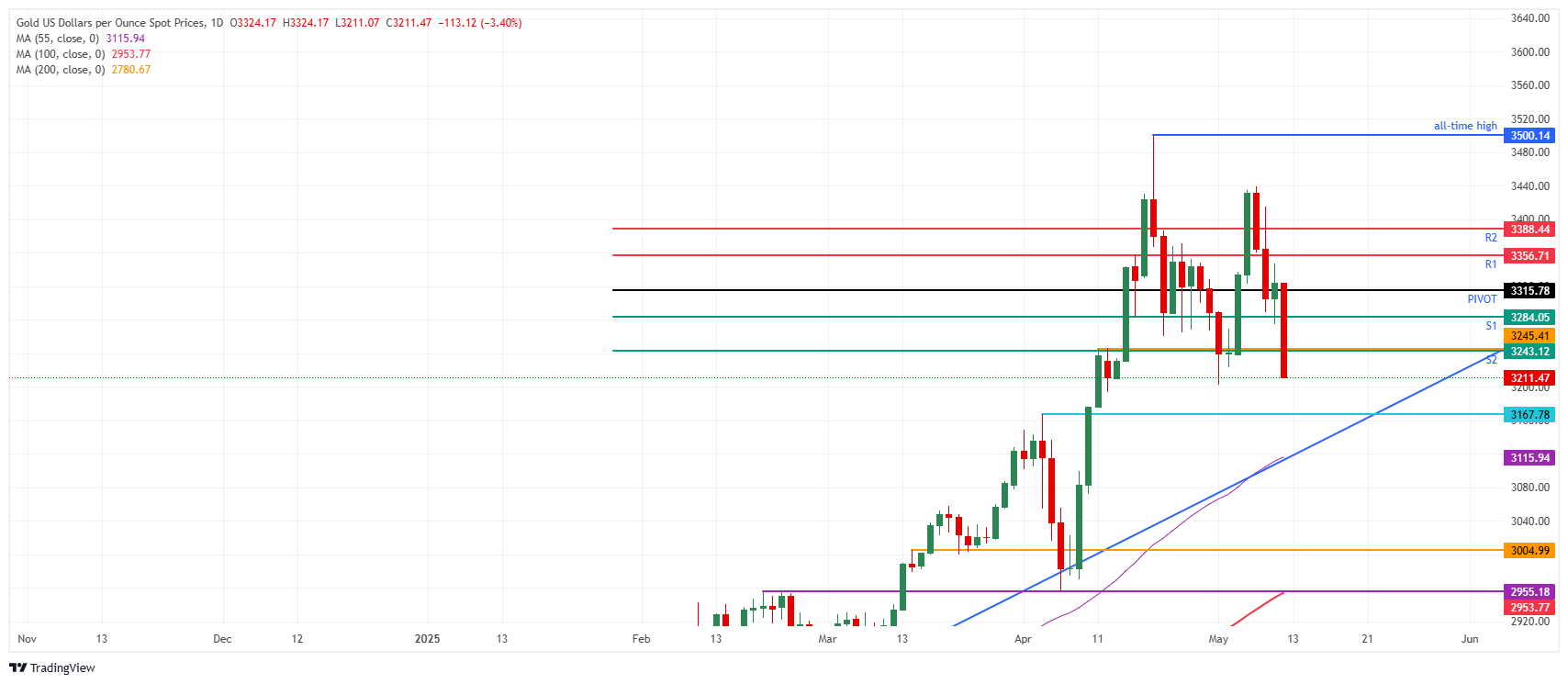- Gold prices suffer an intraday decline of over 2.5% as the US and China reach a 90-day tariff reduction agreement.
- China will cut tariffs on US goods from 125% to 10%, while the US will reduce tariffs on Chinese goods from 145% to 30%.
- The shift away from safe-haven assets drives Gold below key support levels, effectively halting the rally.
Gold (XAU/USD) plunges over 3.0% during the European trading session, slipping towards $3,231 as markets react to the latest US-China trade agreement. The two economic powerhouses have agreed to lower tariffs for 90 days: China will reduce tariffs on US goods from 125% to 10%, while the US will cut tariffs on Chinese goods from 145% to 30%. This agreement has sparked a wave of risk-on sentiment, prompting investors to move away from safe-haven assets like Gold.
US President Donald Trump had previously hinted at the potential success of the talks, encouraging investors to "buy stocks now" via his Truth Social Network. In response, Gold has dropped more than 8% from its all-time high of $3,500, recorded on April 21.
Financial Market Reactions
- The US-China tariff reduction has created ripple effects across financial markets. The US 10-year Treasury yield climbed to 4.43%, its highest level since early April, driven by expectations of increased demand and potential inflation due to eased trade tensions.
- In commodities, Oil prices have jumped by more than 2% to $62.50, reflecting anticipated demand recovery. Equities are also on the rise, with Chinese stocks up over 1% and US futures leading gains with a 2.50% to 3% increase. European indices are also seeing moderate upward movement.
- US Treasury Secretary Scott Bessent emphasized that neither the US nor China seeks economic decoupling and expressed his desire for China to further open its market to US goods. Bessent also noted that a purchasing agreement between the two countries remains a possibility, according to Bloomberg.
- As risk appetite grows, Gold is under pressure, with further declines possible if risk-on sentiment continues to dominate. Investors will be monitoring the US 10-year yield and commodity prices as key indicators of market momentum in the coming days.
Gold Price Technical Analysis: Watching for a Potential Bottom Formation
Gold prices are facing increased selling pressure, as expectations rise for a second wave of outflows when the US trading session begins on Monday. Market sentiment indicates that a significant drop below $3,200 could occur, driven by the accumulation of sell orders.
If Gold breaks below the S2 support at $3,245, this pivotal level could trigger a substantial decline, potentially pushing prices toward $3,167. Such a move would effectively erase the gains recorded in April and May, marking a significant downturn for the precious metal.
On the upside, a recovery would require Gold to reclaim several key resistance levels. The first hurdle is the former daily S1 support, now acting as resistance, at $3,284. Next is the daily pivot point at $3,315, followed by the R1 resistance at $3,356 and the R2 at $3,388. Only after regaining these levels would Gold have a chance to retest the all-time high of $3,500.
Traders may consider buying the dip if signs of bottom formation appear around the critical support zones. However, caution is advised as the potential for further selling remains high amid the current risk-on sentiment.






